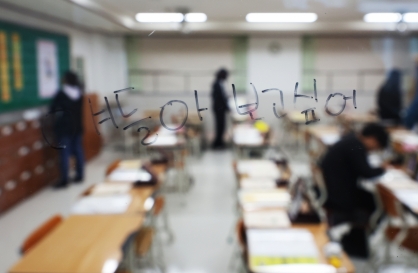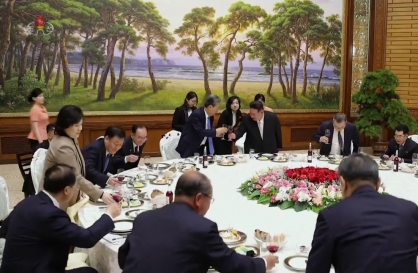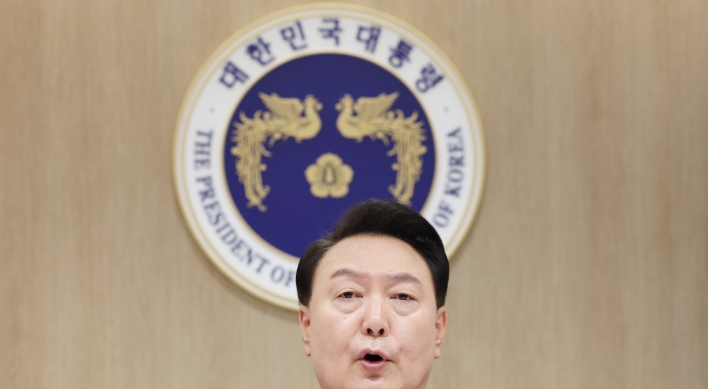A center in the southeastern part of the Korean Peninsula, Daegu is a city with abundant historical and cultural heritage. As it is also a geographical hub in the region, the Silla Dynasty once attempted to move its capital to Dalgubeol (currently Daegu) from Gyeongju. During the Joseon Period, the Gyeongsang Provincial Office was located in Daegu, making this location the political, economic, military and transportation center of the Yeongnam area.
With such a long history, the cultural and historical remains scattered in central Daegu symbolize the local identity, and among them, the Gyeongsang Gamyeong building and Dalseong Fortress are precious cultural assets that offer a glimpse at its long history.
Development of Daegu as the seat of the Gyeongsang Provincial Office
The Joseon Dynasty divided the Korean Peninsula into eight provinces and saw that they were ruled by governors (gamsa or gwanchalsa in Korean). The governors, who held administrative, judicial and military power, carried out duties at provincial offices (gamyeong in Korean). The Gyeongsang Gamyeoung building in Daegu is the office where the Gyeongsang governors worked.
The provincial office had been located in Gyeongju during the early Joseon Dynasty and was moved to Sangju, Chilgok and Andong before settling in Daegu in 1601, the 34th year of King Seonjo’s rule.
During the early Joseon Dynasty, governors traveled to the villages in the province to supervise and control their affairs. But after the Imjin War, these governors stayed and implement duties from their office. As a result, as the seat of the provincial office, Daegu developed into the political, administrative, judicial, military and economic center of Gyeongsang Province.
The Gyeongsang Provincial Office did not have separate facilities during the early Joseon Period, but during the late Joseon period, government buildings were constructed, including the Seonhwadang, office and residence of the governor, and the Jingcheonggak pavilion. To the south of Seonhwadang was Pojeongmun gate, on which a pavilion was built. The pavilion’s name Gwangpungnu means “a pavilion where the governor overseas provincial affairs.”
In addition, being a provincial capital, Daegu became a repository of various goods and products. The Yangnyeongsi herbal medicine market, which now boasts over 350 years of history, originated from a small market held in front of the inn located in the provincial office complex. Due to the geographical advantages conferred to the region, thanks to its location near the Nakdonggang and Geumhogang rivers, Daegu offered convenient transportation means for goods, which also contributed to the formation of Korea’s biggest herbal medicine market.
The historical Gyeongsang Gamyeong office, however, started to decline during Japan’s colonial rule. Bak Jung-ryang, then acting governor of Gyeongsang Province, was a pro-Japanese figure. He demolished the Daegu town castle in 1906 and built roads inside it. The provincial office building was greatly damaged during these events.
The Gyeongsang Gamyeong was renamed the Gyeongbuk Provincial Office in 1910 and was relocated to Sangyeok-dong in 1966. A park was cultivated on the old site of the provincial office, which is now Gyeongsang Gamyeong Park.
Preserving Dalgubol in its original form for thousands of years
Dalseong Park, which we now know as a zoo, was originally the site of a castle built on hilly land.
The first document about the castle is found in “Samguksagi” (“History of the Three Kingdoms”). The book says that Dalseong castle was built and Nama Geukjong was made master of the castle in 261, the 15th year of Silla King Cheomhae Isageum’s rule. However, it is confirmed that people had started to live there from the Bronze Age. The Dalgubeol Kingdom, from which the name Daegu originated, was founded in the area. During the Three Kingdoms period, as is shown in the series of ancient tombs in Dalseong, the area prospered under the resplendent culture of the Silla Dynasty. Toward the end of the Goryeo Dynasty, it was the basis of the Dalseong Seo clan, and during the Joseon Dynasty, Gyeongsang Gamyeong was briefly located here. But during the colonial period, a Japanese shrine was built and become a place of disgrace for Daegu citizens.
As such, Dalseong is embedded with over 2,000 years of the history and culture of Daegu. It not only symbolizes Daegu but also is the oldest rest area for citizens in Daegu and a treasure house of stories.
A park filled with Daegu spirit
Gukchae-bosang Memorial Park, in Dongin-dong, retains the spirit of those Daegu citizens who initiated the nationwide Gukchae-bosang Movement (a national debt remuneration movement) in 1907.
The Gukchae-bosang Movement was a meaningful campaign to recover economic independence from other countries. It was initiated by Daegu citizens, Kim Gwang-je and Seo Sang-don, to pay back the loan of 13 million won from Japan in order to recover Korea’s sovereignty. The movement has served as a spiritual foundation for thef economic development of Korea, handed down to the 1998 gold donation campaign to help the nation recover from the 1997 financial crisis.
The park has many facilities, such as the Dalgubeoldaejong Bell, a belfry, an oak trail, fountains, pavilions and a square. Completed in 1998, the bell is rung at midnight on every New Year’s Eve to awaken the spirit of Daegu citizens and wish for their harmony and prosperity.
In 2011, a memorial hall opened to the west of the park to commemorate the ancestors who had lead the debt remuneration movement in the early 20th century and to promote their spirit to Daegu citizens.
onlinenews@heraldcorp.com">온라인뉴스팀/onlinenews@heraldcorp.com
- Mom’s Touch opens first store in Tokyo
- ShinWon accelerates global expansion with big ESG push
- [Contribution] 6 reasons why a medical school quota increase isn’t the answer to health care reform
- 3 out of 5 young couples went through a rough patch
- Man commended for rescuing driver suffering from epilepsy
- [Photo News] Opposites United
- S. Korea to provide $12m to conflict-ridden Sudan
- Yoon vows to improve communication with people after election defeat
- S. Korea 'strongly' protests Tokyo's renewed claims to Dokdo, calls in Japanese diplomat
- Kim Jae-shin appointed ASEAN-Korea Center secretary-general



















